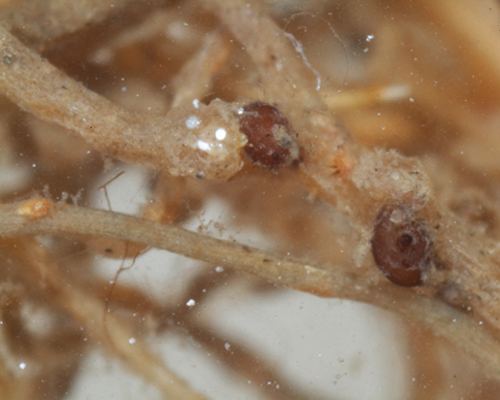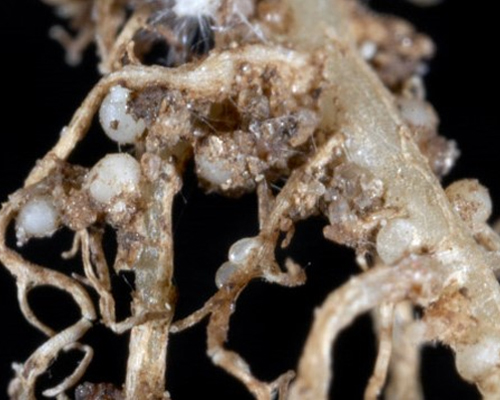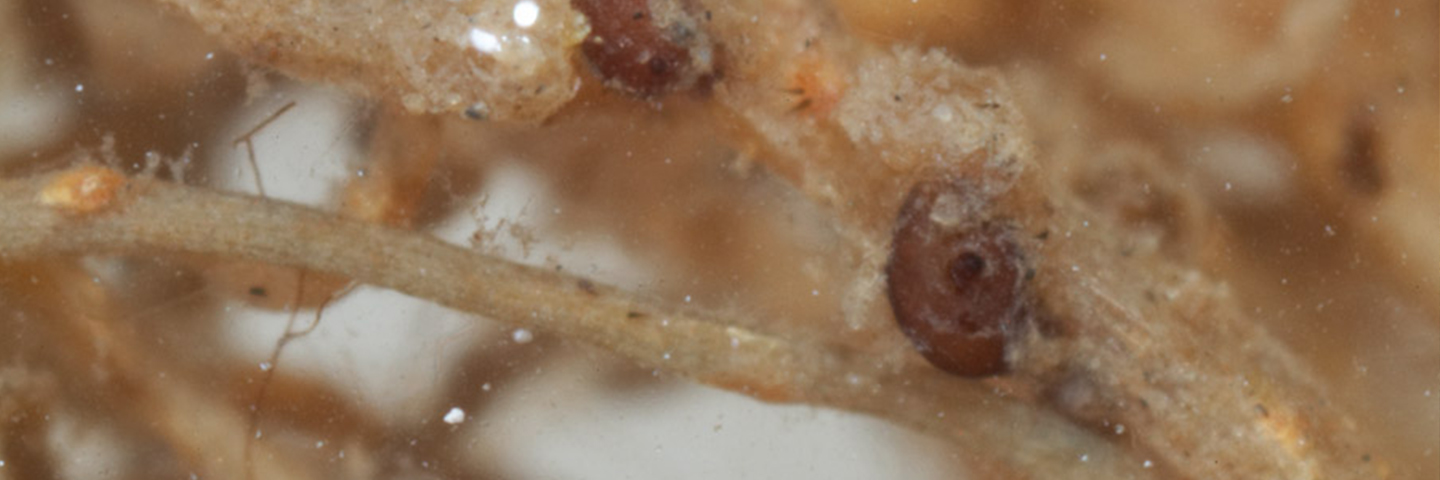Beet Cyst Nematode
Beet Cyst Nematode (BCN; Heterodera schachtii) is an economically important parasite of sugar beet which can be found in all major production areas of the world, favouring temperate regions but tolerating a broad range of climates. Annual losses attributed to this species within the EU is estimated to be €90 million (Muller, 1999).
BCN are mostly dormant in the soil throughout the winter as larvae contained within eggs. These eggs are encased inside a cyst, which are the dead remains of female nematodes. An average cyst is around 1mm in length and may contain as many as 650 eggs. These protective cysts are in part responsible for the persistence of this species in the soil, the ease of its spread to agricultural land and difficulties with control when high thresholds have established. In the spring when weather conditions are favourable, a proportion of the eggs hatch and the infective juveniles will be present in the soil, with viable eggs able to remain within the cyst for a number of years. In the presence of a suitable host, these infective juveniles penetrate the epidermal root tissue behind secondary root tips, mature and become sedentary in the vicinity of the vascular tissue where they induce the formation of syncytial cells. Populations can complete at least two generations during a growing season in the UK, although activity.

In addition to beets, this nematode can parasitise other Amaranthaceae, Brassicaceae and certain field weeds. Brassicas are seldom damaged by BCN, however they are efficient hosts and as a consequence can cause an increase in the population levels which can be as great or even greater than numbers following a beet crop, and should not be used as a break crop to reduce levels.
Symptoms to look for on sugar beet
Damage threshold levels for this nematode species depend on soil type, conditions and plant variety. When populations reach damaging levels, the infestation will become apparent as patches of stunted plants, often appearing in fields initially near gateways or where beet has been piled. In heavily infested areas tap roots are stunted, lateral roots will have proliferated excessively and a proportion dead, resulting in plants being poorly anchored in the soil. Foliage will become chlorotic and wilt during dry periods, with further yield losses in June and July.
The image to the right is showing roots infected with developing Heterodera.

There are over twenty species of cyst forming nematode native to the UK, all with differing biologies and host ranges. Fera offers a unique, accredited nematode identification service to ensure accurate detection and quantification.




